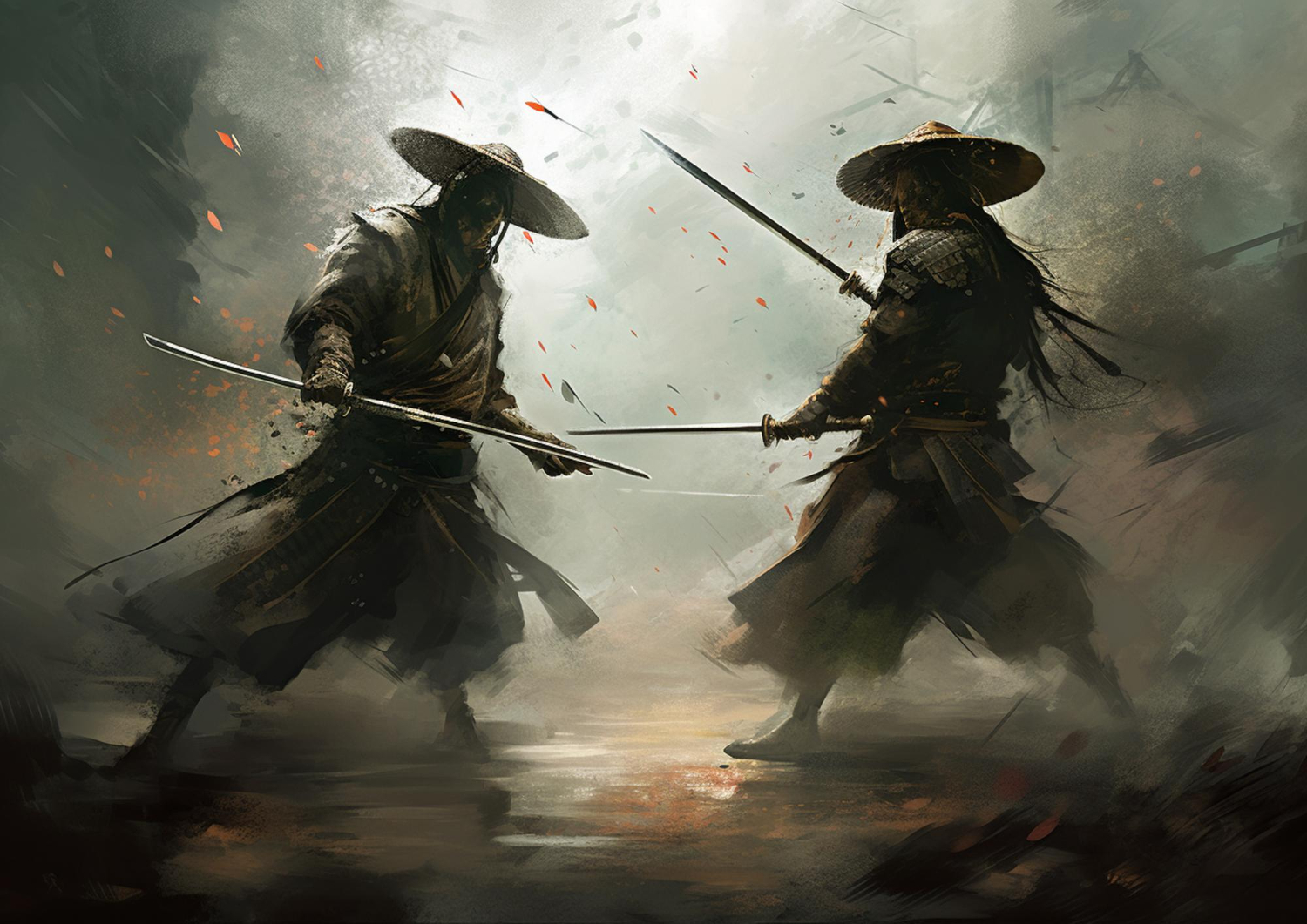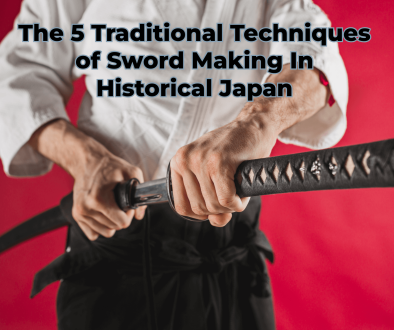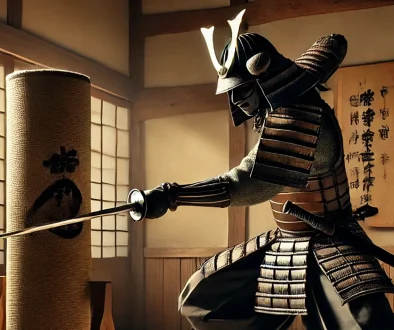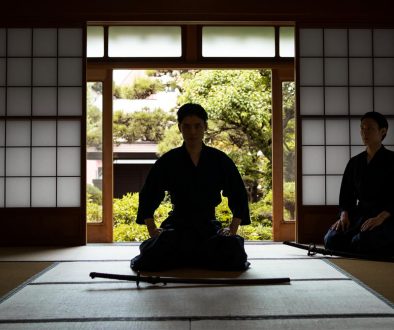All Samurai Battles Listed – Including Date and Summary
Battle of Hakusukinoe (663)

One of the earliest battles involving early Japanese forces was fought between the Tang dynasty and Silla against Baekje and Yamato Japan. Samurai ethos had yet to evolve, but it set the martial foundation.
Taira no Masakado’s Rebellion (939-940)
During the Heian period, Taira no Masakado, a prominent regional samurai leader, led a significant uprising against the central Kyoto-based imperial government. Masakado declared himself the “New Emperor” in the eastern Kanto region.
A pivotal conflict between the Taira (Heike) and Minamoto (Genji) clans for control over Japan. The war saw several dramatic naval and land battles, with the Minamoto clan eventually emerging as the victors. The outcome established the first samurai-led government, the Kamakura shogunate, which would rule for the next century.


A turning point in the Genpei War fought between the Taira and Minamoto clans. Minamoto no Yoshinaka launched a strategic attack, causing a Taira stampede and ensuring a Minamoto victory. Kurikara marked the decline of Taira’s dominance, paving the way for Minamoto’s eventual supremacy in Japan.
Part of the larger Genpei War between the Taira and Minamoto clans, this battle was a pivotal Minamoto victory. It showcased their strategic finesse as they launched a surprise attack on the Taira’s well-fortified position, pushing them back and gaining momentum in the war.
A pivotal naval engagement of the Genpei War, the Battle of Yashima saw the Taira clan flee their fortress on Shikoku to their ships, pursued by the Minamoto clan. Though not a decisive combat in terms of casualties, it was a significant psychological victory for the Minamoto and set the stage for the final confrontation at the Battle of Dan-no-ura.
The climactic sea battle during the Genpei War was fought between the Taira and Minamoto clans. This decisive Minamoto victory marked the end of the Taira’s power. The young Emperor Antoku and many Taira samurai jumped into the sea and perished. This battle solidified the Minamoto clan’s position and set the stage for establishing the Kamakura shogunate.
First Siege of Gassan-Toda (1187)
An episode during the Genpei War. After the Battle of Dan no Ura, the Taira clan remnants retreated to the region’s fortresses, including Gassan-Toda. The fortress successfully resisted the Minamoto siege, showcasing the formidable defensive strategies employed by the Taira.
Second Siege of Gassan-Toda (1189)
After consolidating his rule, Minamoto no Yoritomo turned his attention to the remaining pockets of resistance. The second siege was more intense and eventually led to the fall of the fortress, marking the end of organized Taira resistance and solidifying the Minamoto’s dominance in Japan.
Jokyu Disturbance (1221)
A major power struggle between Emperor Go-Toba and the Kamakura shogunate. The emperor sought to overthrow the military government but failed. The disturbance cemented the Kamakura shogunate’s authority, altering the power dynamics of medieval Japan.
Hanagura no Ran (1273)
A localized conflict in Kamakura-era Japan, Hanagura no Ran is less well-documented than other major samurai battles. Nevertheless, it reflects the time’s volatile politics and power struggles as various samurai families jockeyed for influence and dominance in the post-Gempei War era.
Mongol invasions (1274 & 1281)
A defining moment in Japanese history was when the Mongol Empire attempted to invade Japan twice. Both invasions were thwarted, not just by the bravery of the samurai but also by the kamikaze, the “divine wind” typhoons, which devastated the Mongol fleets. The invasions left a lasting impact on Japanese military and cultural developments.
Battle of Ukino (1333)
During the tumultuous periods of the late Kamakura era, the Battle of Ukino was a confrontation between forces loyal to the Kamakura shogunate and those supporting the restoration of imperial rule. The decisive imperial victory led to the fall of the Kamakura shogunate, setting the stage for establishing the Ashikaga shogunate.
Battle of Kurokawa (1336)
Taking place during the early stages of the Nanboku-chō period, Ashikaga Takauji’s forces clashed with the loyalists of Emperor Go-Daigo. Despite the emperor’s initial successes in establishing a Southern Court, the Battle of Kurokawa marked the commencement of the Ashikaga Shogunate’s ascendancy.
Battle of Minatogawa (1336)
Part of the Nanboku-chō conflicts, where forces loyal to Emperor Go-Daigo fought against Ashikaga Takauji. Though the emperor’s forces held ground initially, Takauji’s strategies turned the tide, leading to a crucial Ashikaga victory.
Battle of San no Yama-Akatsuka (1337)
This battle occurred during the early stages of the Nanboku-chō period, a time of political upheaval and military conflict between the Northern and Southern Courts of Japan. The exact details of the battle might not be as well-documented as other significant encounters from this era. Still, it is representative of the larger struggles for dominance between the rival imperial factions and their associated samurai clans during the 14th century.
Onin War (1467-1477)
A civil conflict during the Muromachi period marked the onset of the Sengoku period. Samurai clashes turned Kyoto into ruins, representing the waning power of the Ashikaga shogunate and the rise of regional daimyōs.
Kato no ran ( 1537 – 1550s)
Less documented than other conflicts of the era, the Kato no ran typifies the Sengoku period’s myriad local disputes. These lesser-known skirmishes contributed to the era’s intricate political landscape, characterized by fluid alliances and continuous warfare.
First Battle of Konodai (1538)
Fought between Awa’s Satomi and Odawara’s Hōjō clan. The Hōjō forces defeated the Satomi, extending their control over the Kanto region. This victory was significant in the Hōjō clan’s ascent to power.
Siege of Koriyama (1540)
A major conflict in the rise of the Amako clan. Led by Amako Haruhisa, they laid siege to Koriyama, controlled by the Yamanaka clan, the siege, although long and drawn out, expanded Amako’s territories and influence in the region.
Battle of Koshu-Katsunuma (1541)
An engagement between the legendary Takeda Shingen and the combined forces of the Uesugi and Hojo clans. Shingen’s tactical brilliance emerged victorious, solidifying his reputation as one of the era’s most formidable daimyos.
Tenbun no ran (1542-1543)
Also known as the Tenbun Rebellion, this conflict was an internal strife within Japan’s Hongan-ji sect, a prominent Buddhist group. Although it was primarily a religious and political dispute, the conflict showcased the intersection of religion and the samurai class, as the sect had significant military capabilities and engaged in full-scale battles.
First Battle of Azukizaka (1542)
A conflict between the Oda and Imagawa clans, this battle was significant in the constant territorial disputes of the era. In Mikawa, it was one of the early tests of the Oda clan’s military strength.
Battle of Hitadori (1545)
This engagement occurred during Japan’s Sengoku period, typifying the era’s complex web of shifting loyalties and territorial ambitions. The specific details might be less renowned than other significant battles, but it adds to the rich tapestry of Japan’s era of Warring States.
Battle of Kawagoe (1545)
Fought between the Later Hōjō clan and the combined Uesugi and Ashikaga forces. The Hōjō forces executed a successful night raid, changing the tide of battle. Their victory in Kawagoe solidified their control over the Kanto region.
Second Battle of Azukizaka (1548)
Six years after the first battle, the Oda and Imagawa clans clashed again in Azukizaka. Under Imagawa Yoshimoto’s leadership, the Imagawa defeated Oda Nobuhide, marking a significant setback for the Oda clan during the Sengoku era.
Battle of Uedahara (1548)
This battle during the Sengoku period was a rare defeat for the Takeda clan, led by the young Takeda Shingen. Facing off against the Murakami and Ogasawara clans in the mountainous Shinano Province, the Takeda forces faced harsh weather conditions and a surprise attack, which resulted in heavy losses.
Second Battle of Kawanakajima (1555)
One of the five battles between the iconic daimyos Takeda Shingen and Uesugi Kenshin. Although neither side achieved a conclusive victory, the battles illustrated the tactical prowess of both leaders and are celebrated for their strategic complexities.
Battle of Miyajima (1555)
Fought between the Mōri and Ōuchi clans. Mōri Motonari’s cunning strategies, including the surprise attack after feigning a retreat, led to the fall of the Itsukushima Shrine and a significant defeat for the Ōuchi forces.
Battle of Nagaragawa (1556)
Amidst the intricacies of Sengoku-era politics, this battle saw the Azai and Asakura clans face off against Oda Nobunaga’s forces. Even though Nobunaga’s tactical brilliance often secured his victories, this battle was a stark reminder of the unpredictable nature of warfare in this period.
Battle of Moribe (1560)
A skirmish during Japan’s tumultuous Sengoku period, this battle pitted the Mōri clan against the Ōuchi clan. The outcome, favoring the Mōri, demonstrated their growing power and influence in the western parts of Honshu.
Battle of Norada (1560)
One of the numerous confrontations during Japan’s Sengoku period, the Battle of Norada involved the Matsudaira clan fighting against the Imagawa clan. The outcomes of such battles were instrumental in determining the balance of power among regional daimyōs, setting the stage for the unification of Japan.
Battle of Ochikubo (1560)
Another crucial encounter in the Sengoku era, this battle witnessed the clash between the Later Hōjō clan and the Uesugi clan. These conflicts, though regional in their scope, played a part in the broader canvas of Japan’s political and territorial realignments during the period.
Siege of Arai (1560)
Located in the Mikawa region, the Siege of Arai was a part of the more significant power struggles during Japan’s tumultuous Sengoku era. While less well-known than other sieges, its outcomes would have played into the larger dynamic of regional control and shifting allegiances.
Battle of Okehazama (1560)
Oda Nobunaga faced an army of the Imagawa clan and emerged victorious despite being heavily outnumbered. It was a pivotal battle showcasing the tactical genius of Nobunaga and the importance of surprise in samurai warfare.
Fourth Battle of Kawanakajima (1561)
Arguably the most intense of the five Kawanakajima battles. The clash witnessed an almost lethal encounter between Shingen and Kenshin, with both sides suffering heavy casualties. The fight is legendary, often romanticized in Japanese art and literature.
Second Battle of Konodai (1564)
Another confrontation between the Hōjō and Satomi clans. While the Hōjō were victorious once again, the battles at Konodai epitomized the constant struggle for dominance in the Kanto plains during the Sengoku period.
Battle of Mimasetoge (1569)
In his bid to expand into Suruga Province, Takeda Shingen faced the combined forces of Tokugawa Ieyasu and Hōjō Ujiyasu at Mimasetoge. Using the fog as a shield, Takeda’s surprise night attack caused a retreat of the Tokugawa-Hōjō forces.
Battle of Anegawa (1570)
I fought between Oda Nobunaga and Tokugawa Ieyasu against the Azai and Asakura clans. This battle saw the rise of Nobunaga as a dominant power, highlighting the importance of samurai alliances.
Battle of Nagashima (1571-1574)
This series of battles saw Oda Nobunaga’s campaigns against the Ikko-Ikki, a group of militant monks and peasants. Despite initial setbacks, Nobunaga’s determination culminated in the siege and final destruction of the Nagashima fortress, a crucial Ikko stronghold, marking a significant step in Nobunaga’s quest to unify Japan.
Battle of Kizakihara (1572)
As Japan’s significant players sought to extend their territories during the Sengoku period, the Battle of Kizakihara manifested as one such military engagement. It contributes to understanding the intricate, ever-changing power struggles of the era.
Siege of Iwamura (1572-1573)
An essential stronghold due to its strategic location, Iwamura Castle was a target during the era’s power struggles. Takeda Shingen successfully captured it, emphasizing the fluctuating power dynamics of the Sengoku period.
Battle of Mikatagahara (1573)
Fought between the Tokugawa clan and the Takeda clan, it was one of Tokugawa Ieyasu’s significant defeats. It displayed the intricate tactical formations and horseback skills of samurai warfare.
Fourth Siege of Odani (1573)
Odani Castle was a vital stronghold of the Azai clan. Throughout the Sengoku period, it saw multiple sieges, with the fourth being particularly notable. During this siege, Oda Nobunaga and his allies tightened their grip, leading to the eventual decline of the Azai clan and a step forward in Nobunaga’s campaign to consolidate power.
Siege of Nara (1574)
Oda Nobunaga attacked the Ikko-ikki monks and their allies at Nara, setting many of the city’s historical structures ablaze. It emphasized the end of the religious and military might of these monks and the dominance of the samurai class.
Siege of Takatenjin (1574-1575)
A fundamental conflict during the Sengoku period, the Siege of Takatenjin, was an engagement between Oda Nobunaga and Takeda Shingen. Nobunaga aimed to capture the strategically vital Takatenjin Castle. After a prolonged siege and relentless assaults, the defenders were eventually worn down, leading to the capture of the castle by Nobunaga’s forces, further strengthening his position in the region.
Siege of Iwakura (1574)
As Oda Nobunaga sought to expand his control during the Sengoku period, the Siege of Iwakura was one of his military campaigns. It is a testament to Nobunaga’s strategic capabilities, marking his relentless march to unify Japan under his rule.
Battle of Nagashino (1575)
Oda Nobunaga and Tokugawa Ieyasu’s forces defended against Takeda Katsuyori’s attack. The strategic use of firearms changed traditional samurai warfare, marking a shift in Japanese military tactics.
Siege of Tottori (1575)
One of Oda Nobunaga’s notable campaigns, the Siege of Tottori, was a prolonged effort to capture the Tottori Castle held by Kikkawa Tsuneie. Nobunaga’s forces resorted to various tactics, including cutting off supplies leading to famine within the castle walls. This siege is infamous for the defenders resorting to cannibalism due to severe food shortages before finally surrendering.
Akizuki Rebellion (1576)
This was a rebellion against the Otomo clan by the Akizuki clan, allies of the Otomo, during Japan’s Warring States period. It reflects the turbulent nature of the Sengoku era, where shifting allegiances and internal feuds were common.
First Battle of Kizugawaguchi (1576)
A naval conflict between the forces of Oda Nobunaga and the Mōri clan. The Mōri, exploiting their maritime superiority, hindered Nobunaga’s attempt to control the waterways. The battle underlined the importance of naval strategies in Japan’s warring states period.
Battle of Tedorigawa (1577)
Fought between the Uesugi and Oda clans, this battle saw Kenshin Uesugi’s forces defeat a numerically superior Oda army. The skill and discipline of Uesugi’s samurai were crucial to their victory.
Siege of Kozuki (1578)
Between Mōri Terumoto and Oda Nobunaga’s ally, Toyotomi Hideyoshi. Hideyoshi attempted to capture Kozuki Castle but faced fierce resistance. The siege exemplified the era’s strategic stronghold battles, crucial for controlling territories.
Battle of Arita-Nakaide (1578)
During the late Sengoku period, the Battle of Arita-Nakaide was a pivotal conflict in Kyushu. The Ōtomo and Ryūzōji clans faced off, with the Ryūzōji clan being severely defeated, drastically changing the balance of power in the region.
Battle of Mimigawa (1578)
A clash between the Ryūzōji clan and Ōmura Sumitada. Despite being outnumbered, Ōmura used clever tactics to secure a victory, a testament to the unpredictability and strategic intricacies of Sengoku-era warfare.
Otate no Ran (1578-1579)
Also known as the “Otate Rebellion”, this was an internal conflict within the Uesugi clan after the death of Uesugi Kenshin. Two adopted sons of Kenshin vied for succession, leading to a split within the family. The power struggle showcased the fragility of alliances and how leadership disputes could impact the stability of a clan.
Siege of Miki (1578-1580)
One of the longest sieges during Japan’s Warring States period. Fought between the Oda and Mōri clans for the Miki Castle, the siege saw extensive tunnel warfare and strong defenses by the Miki garrison. Ultimately, the defenders surrendered after two years of resistance.
Battle of Tonomoto (1582)
Amidst the turmoil of the Sengoku period, the Battle of Tonomoto was a naval conflict between the Mōri clan and the forces of Oda Nobunaga. Even though Nobunaga’s forces were achieving significant success on land, maritime warfare showcased the challenges and the importance of dominance on the sea in Japanese warfare.
Siege of Uozu (1582)
During the late Sengoku period, the Siege of Uozu saw Oda Nobunaga’s general Shibata Katsuie lead a campaign to subdue the Uesugi clan’s territories. The Uozu Castle was a stronghold in the Etchū Province, and its capture by Katsuie’s forces marked a significant advance against the Uesugi domains.
Battle of Yamazaki (1582)
After the Honno-ji Incident, this battle saw Hashiba (Toyotomi) Hideyoshi defeat Akechi Mitsuhide, avenging Oda Nobunaga. It underscored Hideyoshi’s rise and was pivotal in his path to unify Japan.
Honno-ji Incident (1582)
A pivotal moment in samurai history was when Oda Nobunaga, a significant unifier of Japan, was betrayed and forced to commit seppuku by one of his generals, Akechi Mitsuhide.
Siege of Akechi (1582)
Not as well-documented as other sieges, the Siege of Akechi was tied to the larger political turmoil of the era. Taking place after the Honno-ji Incident, where Akechi Mitsuhide betrayed Oda Nobunaga, it represents the subsequent power struggles during Japan’s warring states period.
Battle of Shizugatake (1583)
After the death of Oda Nobunaga, his successor Toyotomi Hideyoshi defeated Shibata Katsuie. This victory solidified Hideyoshi’s position and paved the way for his eventual unification of Japan.
Siege of Takamatsu (1583)
During a conflict during the Sengoku period, Toyotomi Hideyoshi besieged Takamatsu Castle, controlled by the Mōri clan. The strategic use of dams to flood the castle showcased innovative tactics during the era.
Battle of Okitanawate (1584)
One of the significant battles during Japan’s tumultuous Warring States period saw the forces of Shimazu Yoshihisa clash against those of Itō Yoshisuke. Though the Shimazu were victorious, the battle is remembered for its fierce combat and indicates the territorial disputes that characterized this era.
Battle of Utsunomiya Castle (1584)
As part of Toyotomi Hideyoshi’s campaigns to unify Japan, the Battle of Utsunomiya Castle was a siege led by Toyotomi’s generals against the Later Hōjō clan. The castle’s fall solidified Toyotomi’s control over the Kanto region.
Battle of Nagakute (1584)
As part of the more significant conflict between Toyotomi Hideyoshi and Tokugawa Ieyasu, this battle in the Komaki-Nagakute campaign saw both sides trying to gain an edge in the broader struggle for Japan. The battle ended inconclusively but showcased the tactical depths both sides employed.
Battle of Iyama (1585)
As Toyotomi Hideyoshi sought to solidify his control of Japan, this battle was among the conflicts that marked his campaign. The Battle of Iyama underscores warfare’s swift and often brutal nature during this transformative period in Japan’s history.
Battle of Hetsugigawa (1585)
During the turbulent Sengoku period, the Battle of Hetsugigawa was one of many battles that marked Japan’s era of Warring States. Fought between rival samurai clans epitomized this period’s shifting alliances and relentless pursuit of power. The outcomes of these battles, including Hetsugigawa, laid the groundwork for the eventual unification of Japan under the Tokugawa shogunate.
Kyushu Campaign (1587)
Toyotomi Hideyoshi undertook an ambitious military campaign to subdue the daimyos of Kyushu, and despite facing challenges like the formidable Shimazu clan, Hideyoshi’s strategic brilliance, and diplomacy ensured his control over the region, furthering his goal of unifying Japan.
Battle of Sendaigawa (1589)
In the larger context of Toyotomi Hideyoshi’s efforts to consolidate power over Japan, the Battle of Sendaigawa pitted the Shimazu clan against Hideyoshi’s vast forces. Although the Shimazu clan fought bravely, they were overwhelmed by Hideyoshi’s army’s sheer numbers and superior tactics. The battle led to the submission of the Shimazu clan and further solidified Hideyoshi’s grip on Japan.
Siege of Odawara (1590)
Toyotomi Hideyoshi’s campaign against the Hojo clan. This long siege eventually led to the Hojo’s surrender, mainly without bloodshed, due to Hideyoshi’s overwhelming forces and strategic blockade.
Hideyoshi’s invasions of Korea (1592-1598)
A two-part war where Toyotomi Hideyoshi sought to conquer Ming China through Korea. It saw large mobilizations of samurai overseas, illustrating Japan’s military ambitions and the challenges of waging war abroad.
Battle of Kizugawa (1596)
In the latter part of the Sengoku period, this battle underscored the rising tensions as various factions attempted to establish dominance before the unification of Japan. The Battle of Kizugawa is symbolic of the time’s volatile political environment.
Siege of Otsu (1600)
As part of the broader campaign leading up to the pivotal Battle of Sekigahara, Ishida Mitsunari attempted to take Otsu Castle from the hands of Kyōgoku Takatsugu. The siege played a role in the events leading up to the unification of Japan under Tokugawa Ieyasu.
Battle of Sekigahara (1600)
The decisive battle paved the way for Tokugawa Ieyasu to establish the Tokugawa Shogunate, marking the start of over 250 years of peace in Japan and the height of samurai culture.
Siege of Iwaya (1600)
Part of the more extensive campaign culminating in the Battle of Sekigahara, the Siege of Iwaya was fought between forces loyal to Tokugawa Ieyasu and those opposed to his rise. This siege, and the broader campaign, ultimately determined the political landscape of Japan for the next two centuries.
Invasion of Ryukyu (1609)
Though chronologically out of place compared to previous entries, the invasion of Ryukyu by the Shimazu clan of the Satsuma Domain resulted in the Kingdom of Ryukyu becoming a vassal state of Satsuma while maintaining nominal tributary relations with China.
Siege of Tanabe (1609)
A testament to strategic defense, the Siege of Tanabe saw the castle of Tanabe, under the command of Kyōgoku Takatsugu, withstand the assault by the forces of Tokugawa Ieyasu. Despite being vastly outnumbered, Kyōgoku’s staunch resistance and the castle’s strong fortifications forced the Tokugawa forces into a stalemate. The siege ended diplomatically without the court falling, showcasing the importance of solid defense in samurai warfare.
Osaka Campaign (1614-1615)
Consisting of the Osaka Winter Campaign followed by the Summer Campaign, these were the last major military confrontations of Japan’s Sengoku period. Toyotomi Hideyori attempted to resist the shogunate led by Tokugawa Ieyasu. The eventual fall of Osaka Castle marked the end of the Toyotomi clan’s power, solidifying the Tokugawa Shogunate’s rule for the next 250 years.
Osaka Winter Campaign (1614)
Tokugawa Ieyasu laid siege to Osaka Castle, held by supporters of the late Toyotomi Hideyori. A truce was negotiated while the castle held out, ending the campaign.
Battle of Sakai (1615)
An engagement during the Osaka Summer Campaign, the Battle of Sakai, saw the Toyotomi forces clashing with the Tokugawa’s naval units. Located near Sakai city, the battle featured a fleet commanded by the skilled and resourceful Wakizaka Yasuharu. Although a minor conflict within the more extensive campaign, its outcomes contributed to the Toyotomi clan’s eventual fall and the Tokugawa Shogunate’s firm establishment.
Osaka Summer Campaign (1615)
In the follow-up to the winter campaign, Tokugawa forces returned to defeat the Toyotomi loyalists decisively. This led to the final destruction of the Toyotomi lineage and solidified Tokugawa’s hold on Japan.
Shimabara Rebellion (1637-1638)
A revolt of Catholic Christian peasants, including rōnin, against the Tokugawa Shogunate due to heavy taxes and religious persecution. The involvement of rōnin highlighted the complexities of samurai life during the early Tokugawa period.
Shakushain’s Revolt (1669-1672)
Shakushain’s Revolt was not a typical samurai conflict but was a significant rebellion led by the Ainu chieftain Shakushain against the Japanese settlers, particularly the Matsumae clan, in Hokkaido. It stands as one of the most substantial resistance efforts by the Ainu against Japanese encroachment. The initial successes of the Ainu were significant, but the rebellion was eventually suppressed, strengthening Japanese influence in Hokkaido.
Revolt of the Three Feudatories (1673-1681)
Moving outside of Japan, this revolt took place in China during the Qing Dynasty. Three powerful warlords in the south, previously Ming loyalists, challenged the Qing rule. Though not directly related to samurai culture, the event shares similarities in the dynamics of regional power players challenging a centralized authority.
Battle of Ueno (1868)
As part of the Boshin War, the Battle of Ueno saw pro-Tokugawa shogunate forces defending the Kan’ei-ji temple against Imperial Japanese forces. Despite their fierce defense, the shogunate forces, including several elite samurai, were overwhelmed, marking a significant step towards restoring imperial rule.
Battle of Toba-Fushimi (1868)
A critical early battle in the Boshin War, the Battle of Toba-Fushimi saw forces of the Tokugawa shogunate clash with pro-imperial factions supporting the restoration of the Emperor to power. Despite a numerical advantage, the shogunal forces were technologically outmatched. Their defeat in this battle was a significant blow, hastening the fall of the Tokugawa shogunate and paving the way for the Meiji Restoration.
Boshin War (1868-1869)
A civil war in Japan led to the Tokugawa Shogunate’s end and the Meiji Emperor’s restoration. It was a critical juncture that ushered in Japan’s modern era, with key battles like Toba-Fushimi and Hakodate.
Battle of Aizu (1868)
One of the pivotal battles during the Boshin War, the Battle of Aizu, pitted the Aizu domain against the forces of the newly established Meiji government. Despite their fierce resistance, the samurai of Aizu were eventually defeated, marking a significant advancement in the centralization of power in Japan under Emperor Meiji.
Battle of Hakodate (1869)
The last battle of the Boshin War. The remnants of the Tokugawa shogunate’s forces and their allies made their final stand on Hokkaidō. The newly established Imperial Japanese Army defeated them.
Taiwan Expedition (1874)
The Imperial Japanese Army launched a punitive expedition against the native Paiwan people of Taiwan. Japan retaliated to the Paiwan people’s killing of several shipwrecked Okinawan sailors.
Satsuma Rebellion (1877)
The renowned samurai Saigo Takamori led a revolt against the newly established Meiji government. As one of the last major samurai uprisings, it symbolized the end of the samurai era in Japan.
Sino-Japanese War (1894-1895)
A conflict between the Qing Dynasty of China and the Empire of Japan, primarily over control of Korea. Japan’s resounding victory displayed its modernized military, contrasting the decline of the Qing Dynasty.



